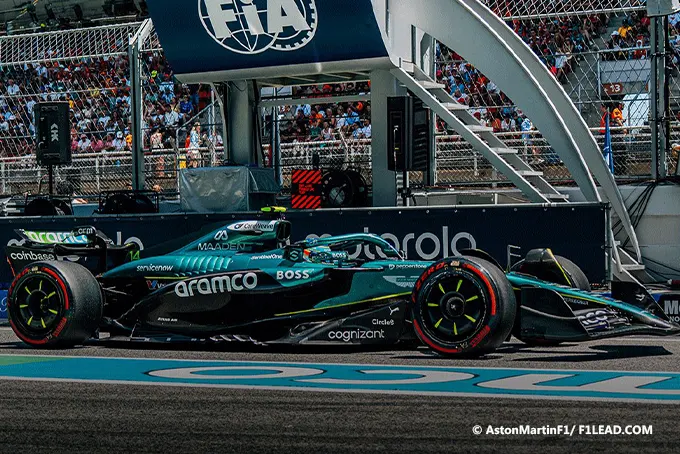Aston Martin F1 refines its car upgrades with calm precision, resisting panic while optimising resources and future gains through structured development.
Aston Martin F1 regained some momentum at the Emilia Romagna Grand Prix in Imola, delivering a significant morale boost. Andy Cowell, the team’s new boss, explains why the new package has lifted team spirit.
Progress Through Planned Execution
“The mood within the company last Monday, when you can stand in front of employees and say, ‘we’ve made upgrades and the car is now faster,’ and when 100% of the people who analysed the data on Friday night agree that it made the car faster, it’s like scoring a point,” Cowell told Crash.net.
“We didn’t actually score a point, but… I don’t think this is about responding to criticism. Fundamentally, we have a certain amount of resources, and if you can spend those resources—whether within the development handicap or elsewhere in the organisation—so that every time we bring something new, it works when we’re on track, then that’s a positive for the organisation and it avoids wasting energy.”
“When you set out a plan, if you can plan for success, the transition from one spec to another can be done with confidence without needing to double up on staff. The company’s energy is therefore spent more productively. Hesitation is both demoralising and resource-consuming.”
In-season developments finally appear to be working for the Silverstone-based team, and Cowell outlines the approach taken to bring meaningful updates.
Structure Over Speed Urgency
“I think it’s about being structured, thinking through what you want to do, achieving it, and then committing once you’re confident it’s going to work. Having a new wind tunnel contributes to that, as does maintaining healthy competitive pressure without giving in to panic.”
“I think last year we rushed so much that our standards were compromised. The harsh reality of Formula 1 is that when you compete, any fragility or vulnerability shows up and bites you. I think that’s what happened last year.”
However, he clarifies that the wind tunnel has not yet been used to design components, only to calibrate and validate them physically. One can imagine that efficiency will improve further once it’s fully integrated.
“The new wind tunnel wasn’t used for the development of the upgrades, but it was used for mapping and final confirmation. That data therefore supported the development decisions for Imola. It makes the transition between hardware and setup easier, between running on track and building a better plan.”
Precision Over Quick Fixes
Aston Martin now has a more comprehensive view of the progress to be made and the work needed to become more efficient: “I think we understand that success in Formula 1 doesn’t come from a silver bullet, but from hard work across many areas.”
“And in each of those areas, you have to understand exactly what makes the car faster and where you’re spending the resources you have. I think McLaren has adapted well to that. That’s the kind of approach we want to take. We know there’s no magic solution.”
“We know there are areas where we can improve, and it’s just about making sure we take those incremental steps and deliver them on track in a thorough way. We’ll implement some of that this year, transferring the technology and approaches into next year, and some of it will wait.”

- Discover More>Stroll Undergoes New Surgery to Address Ongoing Pain
- Following us on>Facebook et Twitter
